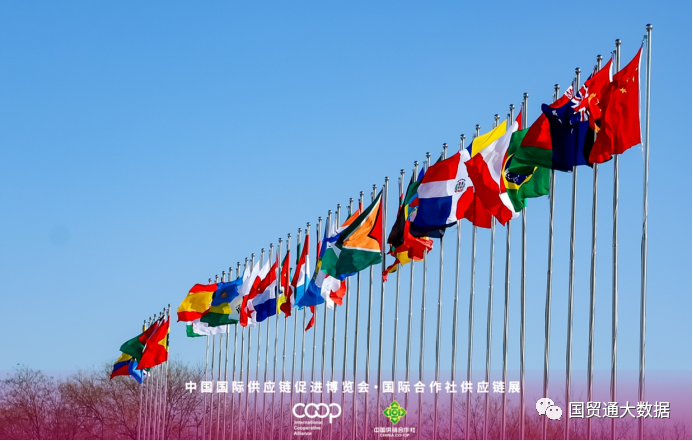
Latin American Trade Hub – Colombia Market Development Guide
“Colombia, located in the northwest of South America, serves as an ideal gateway to the broader South American market. As the fourth-largest economy in Latin America, Colombia has become one of the region’s most influential and promising markets, thanks to its stable economic growth, open market policies, and strategic geographic position.”
Colombia, located in the northwest of South America, serves as an ideal gateway to the broader South American market. As the fourth-largest economy in Latin America, Colombia has become one of the region’s most influential and promising markets, thanks to its stable economic growth, open market policies, and strategic geographic position. In recent years, China-Colombia economic and trade cooperation has deepened significantly, with China now being Colombia’s second-largest trading partner, while Colombia ranks as China’s fifth-largest trading partner in Latin America. According to statistics, bilateral trade between China and Colombia reached $19.336 billion from January to November 2024, marking a 13.3% year-on-year increase. With the continuous strengthening of economic ties, Colombia is emerging as a key target for businesses looking to expand in Latin America.
So, how can foreign trade professionals effectively develop the Colombian market? This comprehensive guide provides key strategies!
I.Colombia Market Overview
1.Strong Consumer Demand – With a population exceeding 50 million and a growing middle class, Colombia has rising purchasing power, driving demand for imported goods such as electronics, home appliances, machinery, construction materials, and household products.
2.Rapid E-commerce Growth – Colombia is one of the fastest-growing e-commerce markets in Latin America, dominated by platforms like Mercado Libre, Amazon, and Falabella, offering vast B2C and B2B opportunities.
3.Business-Friendly Policies – The Colombian government actively attracts foreign investment through free trade policies and has signed multiple economic agreements with China, offering tariff advantages for many products.
II.Key Industries for Market Entry
•Construction & Home Goods – A booming construction sector fuels demand for tiles, sanitary ware, and hardware tools.
•Machinery & Equipment – Mining, agriculture, and manufacturing rely on imported machinery, especially construction and food processing equipment.
•Electronics & Appliances – Rapid growth in smartphones, computer accessories, and smart home devices.
•Automotive & Spare Parts – Colombia’s auto industry depends on imports, with strong potential in EVs and auto components.
•FMCG & Fashion – Stable demand for apparel, footwear, and cosmetics, with competitively priced Chinese products being highly sought after.
III.Key Strategies for Market Development
1. Target the Right Customer Segments
•B2B Channels: Connect with wholesalers and importers through local trade associations (e.g., ANDI – National Business Association of Colombia), chambers of commerce (e.g., Bogotá Chamber of Commerce), and trade fairs (e.g., Feria Internacional de Bogotá).
•B2C Channels: Enter local e-commerce platforms or set up an independent online store, leveraging social media marketing (Facebook, Instagram, TikTok) to reach end consumers.
2. Leverage Free Trade Agreements (FTAs) to Reduce Costs
•Colombia has FTAs with multiple countries. Chinese companies can reduce tariffs through re-exporting or local assembly, with additional tax benefits in free trade zones (e.g., Zona Franca).
3. Overcome Logistics & Payment Challenges
•Logistics: Major ports (Buenaventura, Cartagena) have slow customs clearance. Work with experienced freight forwarders or set up overseas warehouses for faster delivery.
•Payments: Colombians prefer installment payments. Key payment methods include credit cards, PSE (bank transfers), and Mercado Pago—adapt your payment solutions accordingly.
4. Localization & Compliance
•Language: All marketing materials and contracts must be in Spanish.
•Certifications: Some products require local certifications (e.g., INVIMA for food and medical devices). Research regulations in advance.
•Taxation: VAT (IVA) is 19%, while import duties range from 0%-15% depending on product category. Consult a local accounting firm for guidance.
5. Attend Trade Shows & Offline Promotions
Key Exhibitions:
Feria Internacional de Bogotá (Bogotá International Trade Fair)
Andina Pack (Packaging & Food Machinery Expo)
Expoconstrucción (Construction Materials Expo)
IV. Important Considerations
•Credit Risk: Colombian businesses often prefer open-account transactions. Mitigate risks by using credit i•nsurance (e.g., Sinosure) or letters of credit (L/C).
•Cultural Norms: Business negotiations rely on personal relationships. Build trust before discussing pricing.
•Economic & Political Factors: Monitor exchange rate fluctuations (Colombian Peso – COP) and policy changes to adapt quickly.
V.Action Plan
✅ Research industry demand and identify potential buyers/agents.
✅ Register on local e-commerce platforms or establish an overseas warehouse.
✅ Attend Colombia trade fairs in 2025 for face-to-face negotiations.
Conclusion
Colombia presents both opportunities and challenges for foreign traders. Success requires targeted market entry, localization, and compliance. By leveraging the right strategies, businesses can tap into this high-potential Latin American market.









